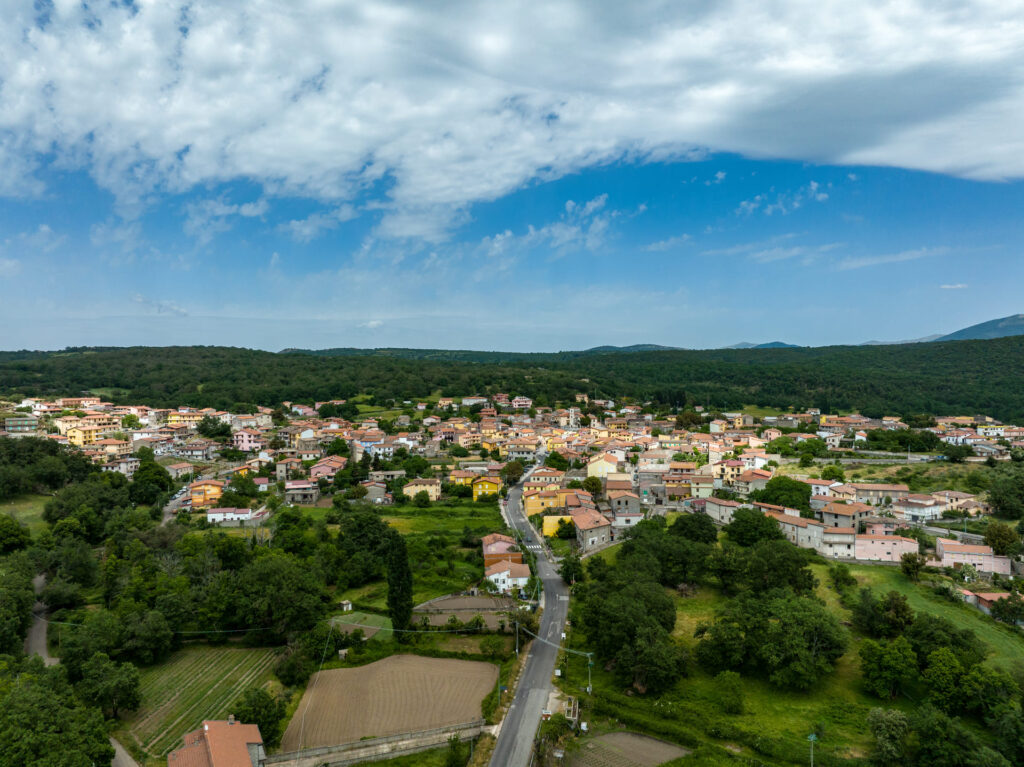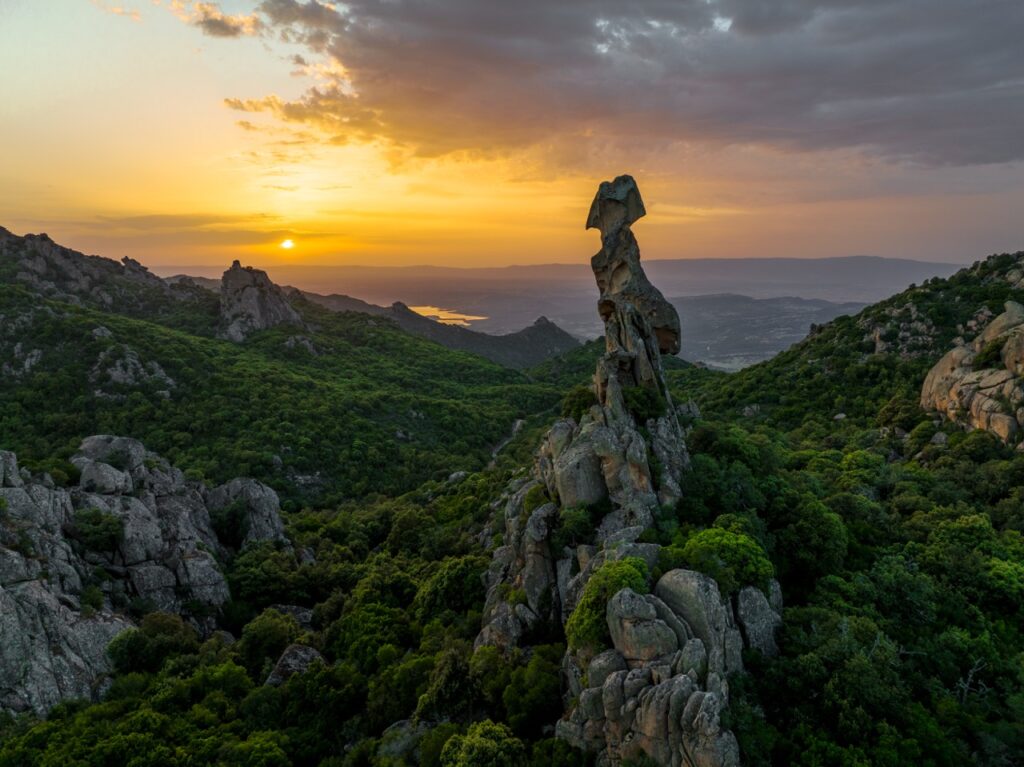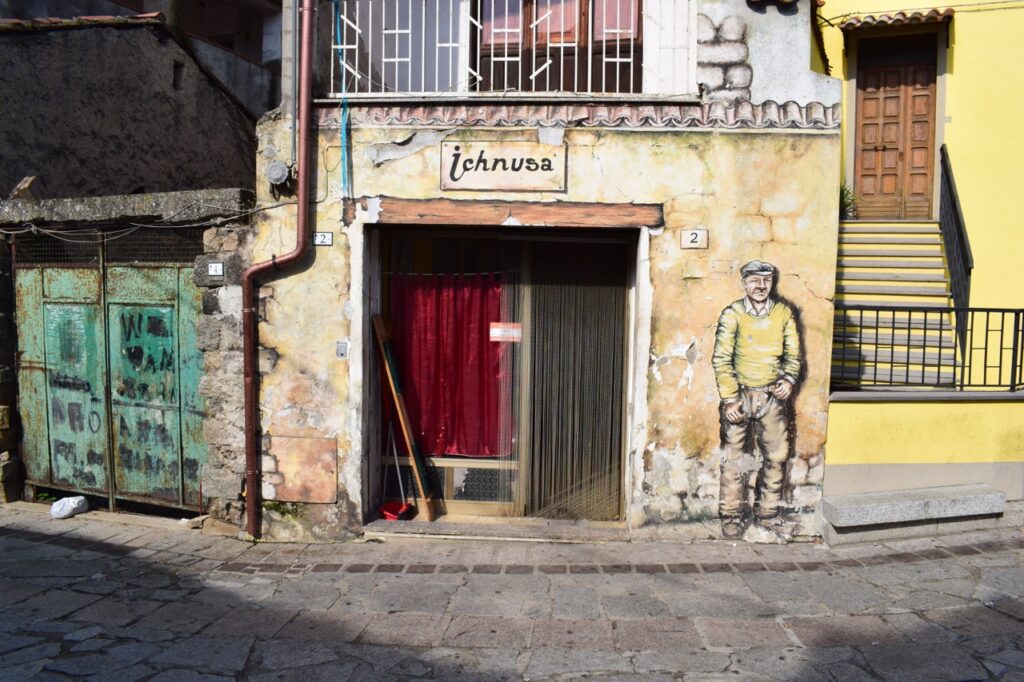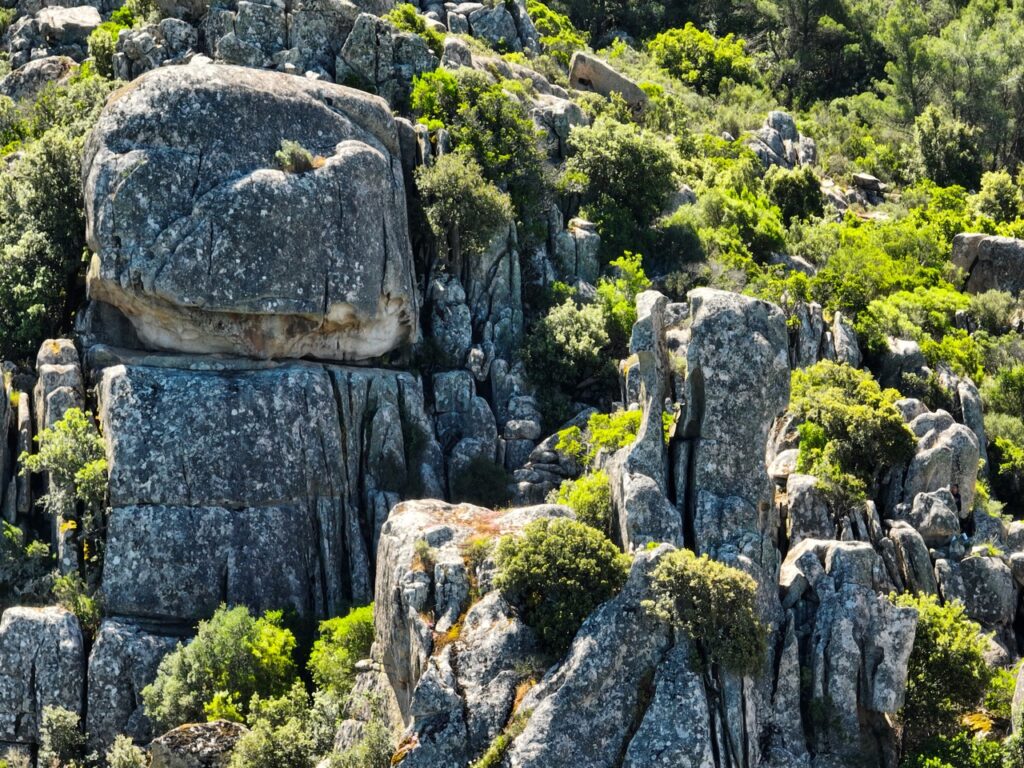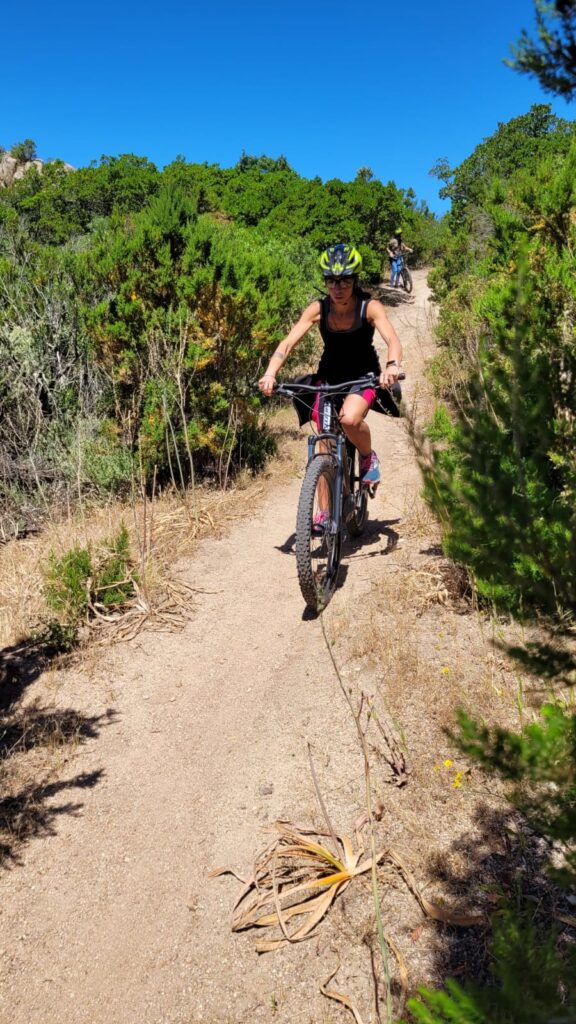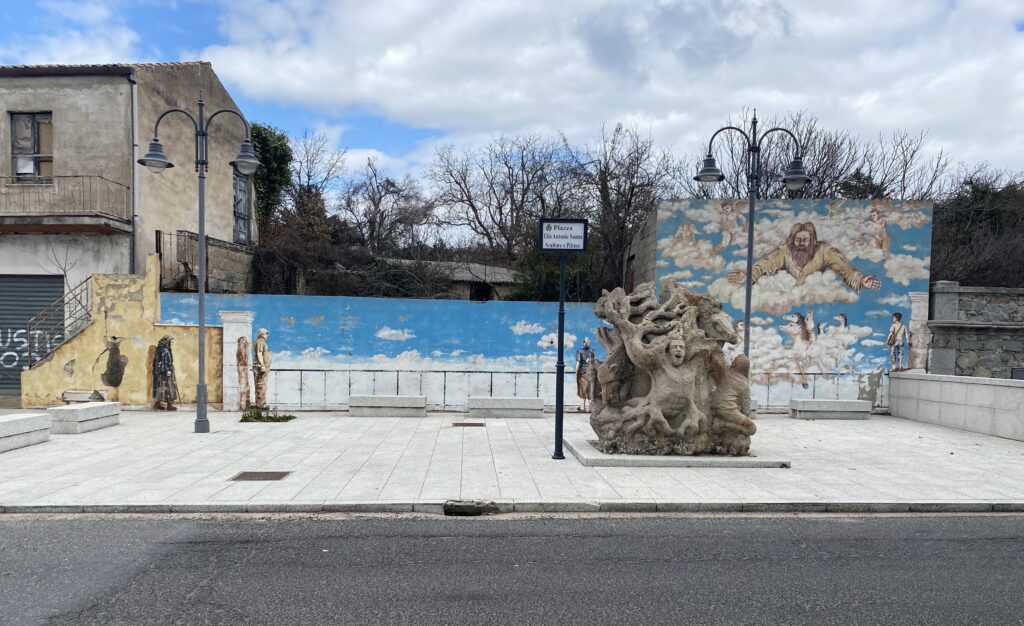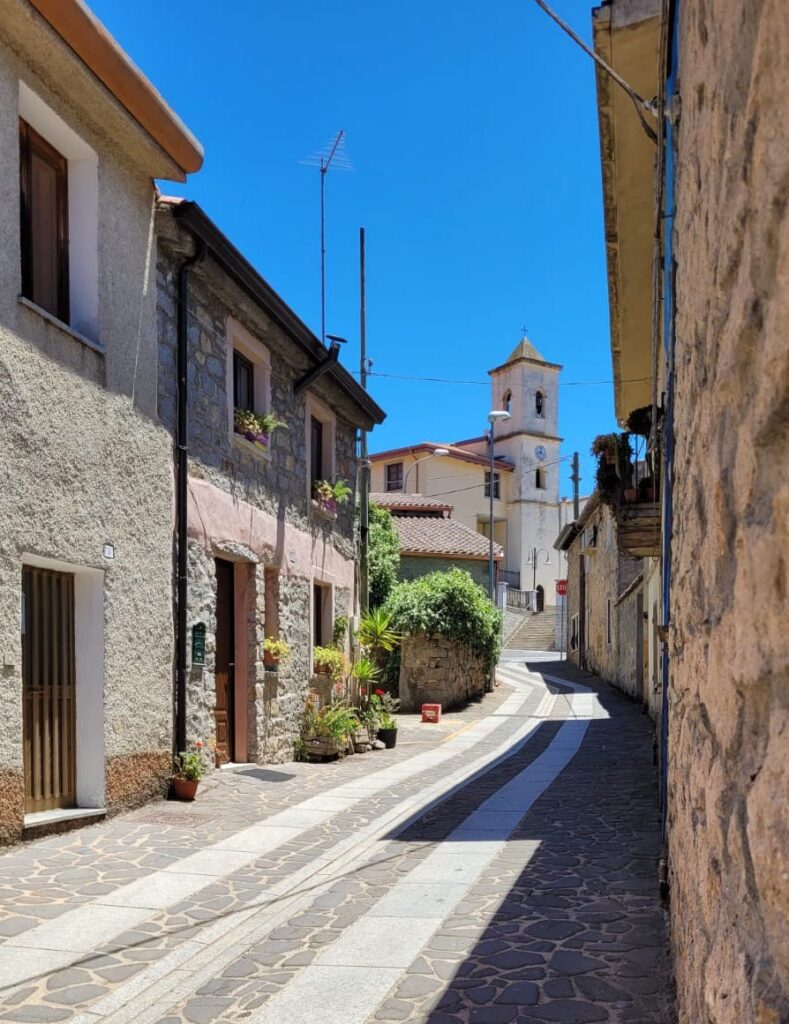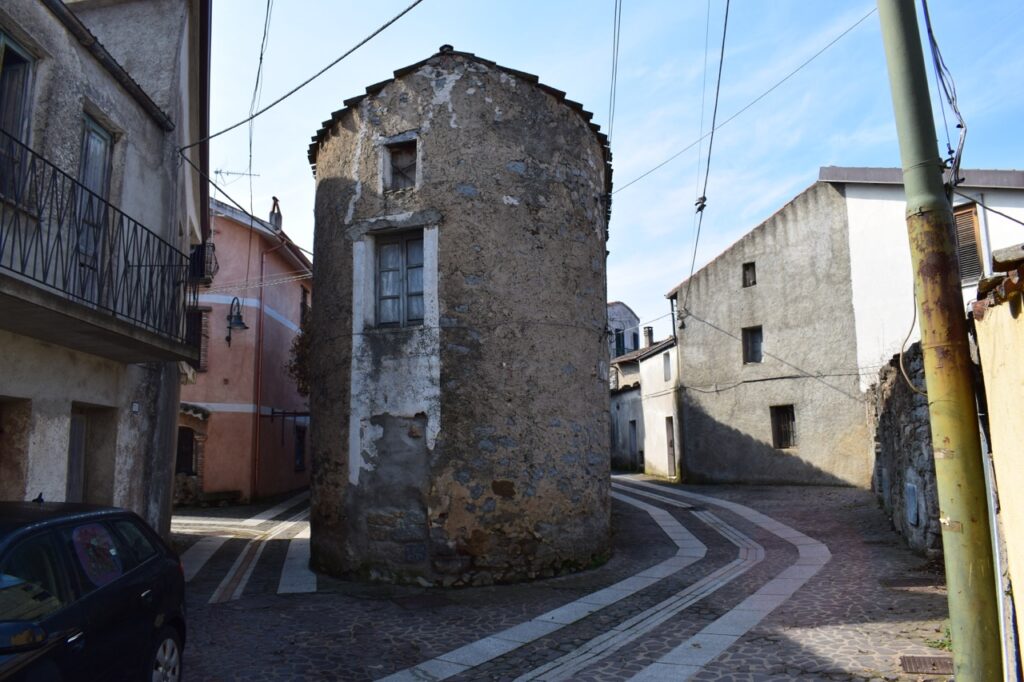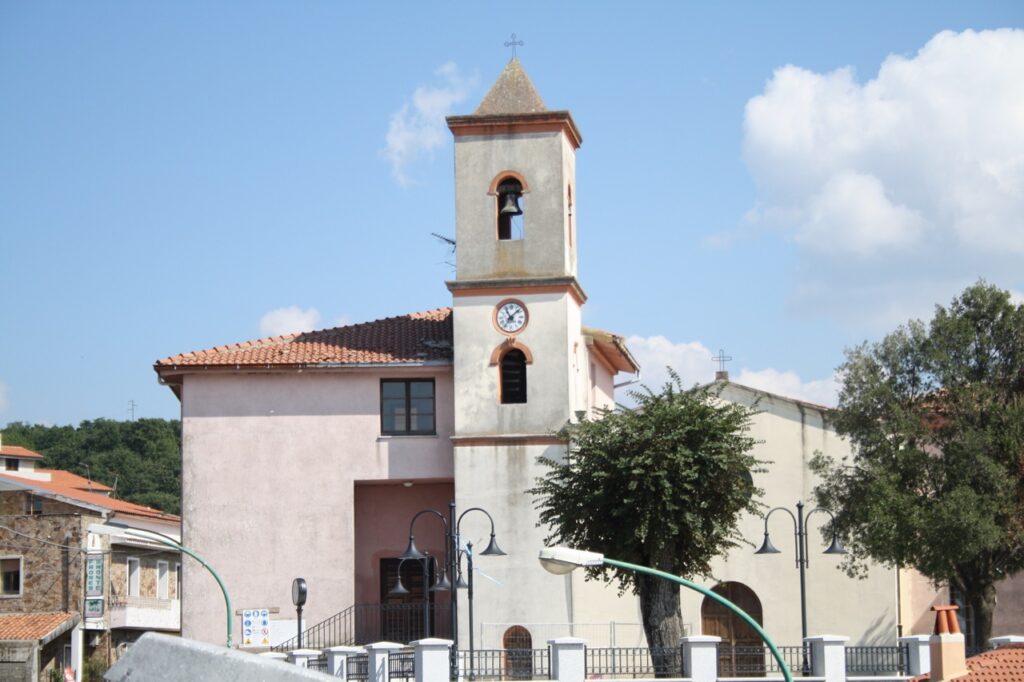The village of Austis is located in the center of Sardinia, in the Barbagia di Ollolai, a historical region in the province of Nuoro. The territory of Austis is predominantly granitic and is one of the most varied in Sardinia: woods rich in chestnut trees, holm oaks and centuries-old oaks alternate with expanses of cork oaks and Mediterranean scrub. Downstream is the Benzone lake, an artificial hydroelectric basin into which the Taloro river flows. The territory has always been dedicated to agro-pastoral use, in fact since the early 1800s the economy of the town was based almost exclusively on pastoralism (cows, sheep and goats) while agriculture was not held in great esteem except for a few products, such as barley, legumes and potatoes. Among the legumes that were grown in Austis there is in particular a variety of bean, su pisu nieddu di Austis, a very renowned and particular variety that is almost disappearing today. if not for a few small producers who still cultivate it in a totally organic manner. At that time several streams flowed in the area and their waters were used to start mills and fulling mills. The fulling mills were machines used in the processing of wool, and it is believed that there were more than 10 in Austis; it is therefore no coincidence that the historic district “Sas Kracheras” still retains their memory in its name.
The monumental rocks of Austis
The natural territory of Austis includes scenarios of rare beauty and offers the possibility of making a variety of excursions thanks to the various paths that offer breathtaking views. The granite rocks that emerge in nature, sculpted by atmospheric agents over the years, are a particular feature of the area and are scattered throughout it. The most famous is certainly ‘Sa Crabarissa’, a granite massif of about 30/40 meters that looks like a woman dressed in a traditional Sardinian costume. Other noteworthy rocks are ‘Su Cannizzu’, an eagle-shaped massif, ‘Sa Conca de Opiane’, ‘Su Nou Pertuntu’ and ‘Su Nou Orruendeche’. The latter attracts many visitors because of the incredible fact that the granite massif manages to hang on top of another without collapsing and because it is hollow inside, so that those who visit it have the opportunity to experience one of the most beautiful sunsets of a lifetime. Another magical natural place is the virgin forest of Tannoro, an uncontaminated area that can only be traveled on foot through rugged and suggestive paths in the woods. This territory is also popular thanks to the legend of Sas Maschingannas de Tannoro.
The trails, from charcoal burners to mountain bikes
The path network of the town has developed at different times since 1996, when the municipality of Austis gave about 1000 hectares of land in concession to the Forestry Authority. These paths tell many stories, such as that of the ancient charcoal kilns. In ancient times, in fact, wood was transformed into charcoal for the most diverse uses. Today we can only find traces of the coal yards, i.e. the clearings where the so-called carbonization of the wood took place, which today often appear as circular spaces, blackened earth and stones or boulders that delimited the coal pit.
But the natural landscapes and woods of Austis were also the main routes for shepherds and farmers who worked and spent most of their time here, so much so that it is possible to spot the remains of ancient sheepfolds. Today it is possible to visit these routes on foot or by mountain bike and it is wonderful to be able to discover these points of historical interest while immersing yourself in suggestive cork oak woods, reforested areas, Mediterranean scrub and obviously the monumental rocks which are real natural sculptures.
Must-see in Austis
The town
The inhabited center of the town is quite intimate and has a well-preserved ancient part distinctive of mountain villages: the houses are mainly made of granite with a wooden roof and some have courtyards surrounded by high granite walls and characteristic wooden balconies overlooking the small alleys. Among the most important buildings we must mention the historic house that belonged to Cavalier Marcello, a nobleman from the end of the 1800s and the Domo Tunda. The latter in particular is one of the most curious and interesting buildings in the town as it has three floors with a semicircular plan. The town offers its visitors the typical services of a lively mountain village such as the bakery, the butchery, the library, the florist, the tobacconist and of course several bars, restaurants and Sardinian ‘zilleri’, where you can taste the island’s wines and liqueurs. In recent years, the town has been embellished by various murals created by local artists, principally Danilo Carta, and by some sculptures among which those created in the 80s and 90s by the local artist Elio Antonio Sanna stand out. To enhance the area there is also a municipal museum, the Casa della Memoria, in which finds and testimonies of Austis’ ancient history will be kept.

